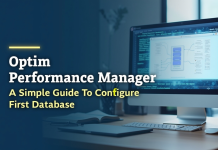Data never stands still. Every second brings new streams of text, visuals, and audio that need to move through systems quickly. Scalable data pipelines make that possible by turning raw, chaotic inputs into structured datasets that models can learn from. These form the backbone of multimodal AI.
To keep these systems running smoothly, pipelines must balance performance, reliability, and precision from end to end. Below are the core principles behind scalable multimodal pipeline design and what engineering teams should focus on as they scale.
Key Takeaways
- Scalable multimodal pipelines convert chaotic data into structured datasets, vital for multimodal AI.
- Traditional data engines struggle with multimodal workloads due to size and complexity differences.
- Optimizing pipeline speed and latency involves techniques like data partitioning, caching, and asynchronous I/O.
- Managing reliability in distributed systems requires checkpointing, replication, and automated recovery.
- Future advancements in multimodal pipeline engineering focus on deeper automation and enhanced collaboration among data teams.
Table of contents
- Why Traditional Data Engines Struggle with Multimodal Workloads
- Managing High-Volume Data Processing
- Optimizing Pipeline Speed and Latency
- Integrating Text, Image, and Audio Data
- Ensuring Reliability Across Distributed Systems
- Simplifying Pipeline Deployment and Scaling
- Monitoring and Debugging at Scale
- Maximizing Compute and Storage Efficiency
- Advancing Multimodal Pipeline Engineering
- Enhancing Collaboration Across Data Teams
- Building Better Scalable Data Pipelines for the Future
Why Traditional Data Engines Struggle with Multimodal Workloads
Most distributed data engines were built for analytics such as filtering millions of rows, running aggregations, or joining tables. Multimodal AI reverses those assumptions. In traditional analytics, rows are small, and operations shrink data size. In multimodal systems, individual rows can be gigabytes.
A single 4K video frame, MRI scan, or long audio file can expand significantly during preprocessing as raw files become decoded tensors. This mismatch creates serious bottlenecks:
- Sequential execution forces workers to download, decode, and transform data one stage at a time. Network, CPU, and GPU resources sit idle while waiting for previous steps.
- JVM overhead in engines such as Spark adds startup delays, complex memory tuning, and heavy serialization when moving data between Scala executors and Python UDFs.
- Lack of native multimodal operators forces teams to rely on slow Python map functions for image decode, resizing, embedding, or audio processing. Entire objects are serialized between processes, which increases latency and memory usage.
Modern multimodal data engines avoid these issues by pipelining operations, staying Python native, and treating complex types such as images, tensors, and audio as first-class dataframe values. Daft explains this multimodal data engine architecture in their Flotilla article.
Managing High-Volume Data Processing
Handling large-scale multimodal data requires more than raw compute power. High-volume pipelines depend on predictable flow, modular stages, and efficient transformations.
Multimodal workloads amplify this complexity. Large batches of images, multi-page PDFs, long text sequences, and synchronized audio streams often arrive at different speeds and sizes.
Many teams blend batch and streaming systems to handle real-time spikes while keeping output consistent. Well-designed pipelines convert massive multimodal datasets into reliable, continuous flows for training and inference.
Optimizing Pipeline Speed and Latency
Speed determines how effective a data pipeline is in production. Slow pipelines limit experimentation, delay model updates, and stretch training cycles. Reducing latency requires identifying and removing chokepoints across the workflow.
Teams often use in-memory computation or parallel execution to increase throughput. Proven techniques include:
- Data partitioning to distribute workloads across workers
- Caching intermediate results to avoid repeated work
- Vectorized operations for faster data transformations
- Asynchronous I/O to minimize idle compute time
For multimodal workloads, additional optimizations matter:
- Batching images by resolution to keep GPU decoding times consistent
- Grouping text sequences by length to reduce padding waste and speed up transformer inference
These refinements keep GPUs and CPUs active instead of waiting on I/O. As a result, pipelines become more responsive and far easier to scale.
Integrating Text, Image, and Audio Data
Combining different modalities in a single workflow requires tight coordination. Each modality introduces its own storage, decoding, and preprocessing challenges.
- Text requires tokenization, normalization, and careful batching to maintain context windows.
- Images demand optimized decoding and consistent memory management to prevent GPU bottlenecks.
- Audio needs segmentation and alignment so that timing matches transcripts or video.
For example, processing large image datasets with Python image libraries often leads to CPU saturation and memory bloat. Engines that provide native image operations in optimized compiled code can reach much higher throughput by offloading decode and resize work.
Similarly, embedding millions of PDF documents requires downloading URLs, parsing binaries, extracting text, and running transformer inference. Without pipelining, these steps increase latency and risk out-of-memory failures.
Unified multimodal execution layers solve these problems by offering consistent and optimized operators for every data type. This removes the need for separate pipelines.
When pipelines involve large transformer models or long-context text inputs, batching becomes another major bottleneck. Daft’s work on dynamic prefix bucketing optimization shows how grouping sequences intelligently reduces padding waste and cuts inference time. This directly benefits multimodal workflows that combine text, image embeddings, and audio transcripts.
Ensuring Reliability Across Distributed Systems
Reliability defines how well a pipeline holds up under real-world pressure. Node failures, unstable networks, or inconsistent storage can cause data loss or incorrect outputs.
Scalable multimodal pipelines rely on:
- Checkpointing to save progress regularly and resume long-running jobs without repeating work
- Replication to duplicate critical datasets across nodes for redundancy and improved read speed
- Automated recovery to detect failures, restart tasks, and maintain uptime with minimal manual involvement
With these safeguards, distributed systems can process massive multimodal workloads consistently while preserving accuracy.
Simplifying Pipeline Deployment and Scaling
Deployment becomes more complex as pipelines grow. Manual setup creates version drift, inconsistent environments, and unpredictable behavior. Automation solves these problems by standardizing packaging, configuration, and scaling.
Containerization and orchestration frameworks allow teams to:
- Roll out updates safely
- Test new components without disrupting active pipelines
- Scale compute resources up or down based on workload demands
Staying Python native eliminates entire categories of friction, including JVM heap tuning, executor mismatch, and long startup times.
Monitoring and Debugging at Scale
At scale, even small errors can cause large downstream failures. Monitoring provides visibility across all pipeline stages, and debugging identifies exactly where errors occur.
Teams track metrics such as:
- Throughput
- Latency
- Error rates
- CPU and GPU utilization
Early detection helps engineers resolve issues quickly and maintain performance under load. Strong observability turns complex multimodal workflows into predictable, dependable systems.
Maximizing Compute and Storage Efficiency
Efficient use of compute and storage determines how far a multimodal pipeline can scale. Poor allocation wastes resources. Over-optimization limits flexibility.
Finding the right balance requires ongoing evaluation of data characteristics and available hardware. Common strategies include:
- Tiered storage that matches data priority with performance requirements
- Autoscaling clusters that expand or contract automatically
- Parallel processing to maximize hardware utilization
When optimized well, pipelines remain fast, economical, and adaptable even as datasets grow.
Advancing Multimodal Pipeline Engineering
Multimodal pipeline engineering continues to evolve as new data types and larger models emerge. The next stage focuses on:
- Deeper automation that removes manual setup and simplifies distributed operations
- Smarter scheduling that groups similar workloads and keeps GPU utilization steady
- Adaptive optimization that tunes batch sizes, memory allocation, and operator behavior in real time
Systems that learn from usage patterns can adjust resources automatically and improve performance without human intervention.
Enhancing Collaboration Across Data Teams
Modern scalable data pipeline design requires cooperation between data engineers, ML engineers, and infrastructure teams. Without alignment, workflows fragment and slow progress.
Shared platforms, unified monitoring, and consistent deployment environments help teams stay coordinated, especially as multimodal workloads grow more complex.
Building Better Scalable Data Pipelines for the Future
Scalable data pipelines are the foundation of multimodal AI. As new data types and larger models arrive, the systems that manage this flow will determine the speed of innovation.
The future is about building engines where dataframe columns store tensors and Python developers can train on petabyte-scale data without touching Scala. Next-generation multimodal engines will query video as naturally as they query tables. Teams that adopt scalable data pipelines and architectures today will iterate faster, train more efficiently, and avoid the overhead of stitching together fragmented systems.











